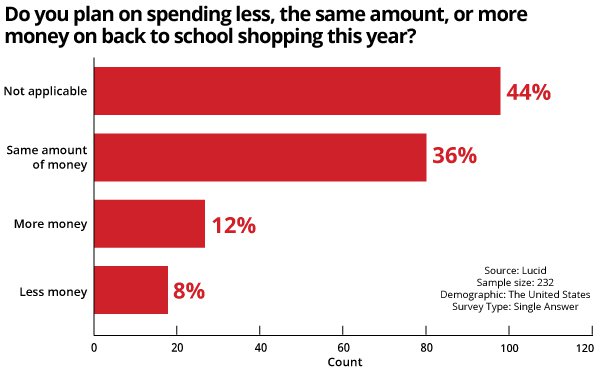
Marketers may need to rethink the way they
target ads as inflation continues to rise. Costs have jumped for many goods and services as the COVID-19 pandemic eases.
The public expects U.S. inflation rates next year will rise 4.8% in
June, the Federal Reserve Bank of New York reported in its latest Survey of Consumer Expectations released Monday. The June
level is the highest recorded in the survey, which dates back to 2013.
Food prices a year from now are expected to fall 7.1% in June from 8% in May, while gasoline prices are seen to fall to
9.2% a year from now, from 9.8% the prior month.
The index measures what consumers pay for goods and services, including clothes, groceries, restaurant meals, recreational activities and
vehicles. It increased a seasonally adjusted 0.9% in June from May, the largest one-month change since June 2008.
advertisement
advertisement
Despite the rate of inflation in the U.S., consumers are spending. In
fact, some 51% of respondents to a survey released Monday are spending more money now than they did six months ago.
I’m definitely in step with the 69% of respondents participating in
the study who said COVID-19 affected the way they spent money during the past year. For me, it wasn’t just COVID-19.
Will it change the way consumers spend during the second part of
2021? Lucid recently tapped its global audience database to put together a survey focused on changing economic trends across a variety of industries as the pandemic begins to subside. A few notable
findings are summarized below:
- 51% of respondents are spending more money now than they were 6 months ago
- 84% of respondents are comfortable dining indoor at
restaurants
- 55% of respondents plan to travel in the next 6 months
- 78% of respondents are more comfortable traveling domestically than internationally this year
- 87% of
respondents plan on shopping for new clothes in the next 6 months
- 38% of respondents prefer to shop in-person while 34% of respondents prefer to shop online
It’s
important to note that the sample size was small, but the majority (53%) live in suburban areas, 26% in rural areas, and 21% in urban areas.
When asked if they plan to buy a house in the next
six months, 58% of 296 U.S. respondents to this question said no, 28% said yes, and 14% are undecided.
The Fed report also suggests that median year-ahead home price change expectations
remained unchanged at 6.2% in June, substantially higher than its 12-months trailing average of 3.7%.